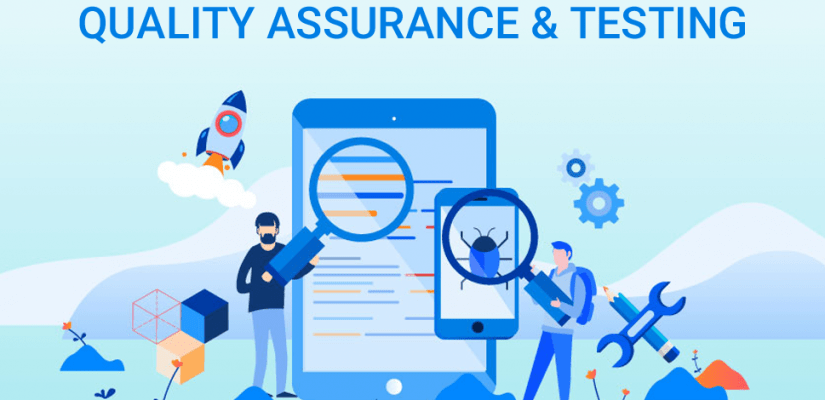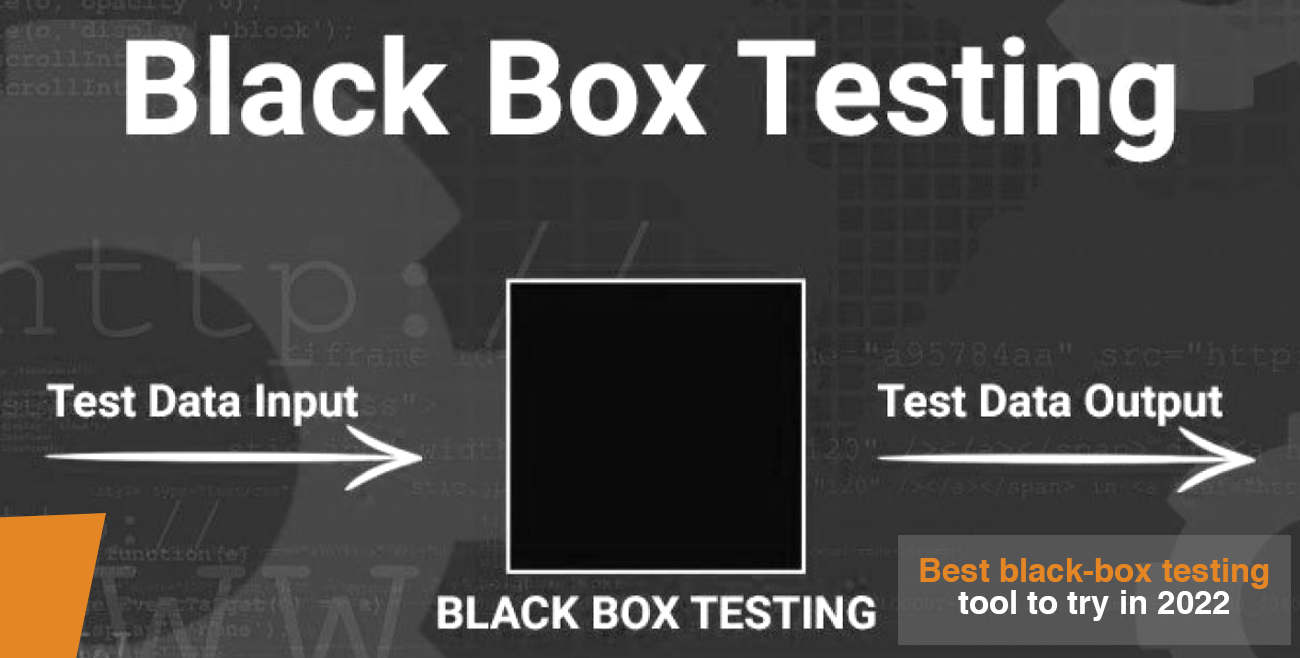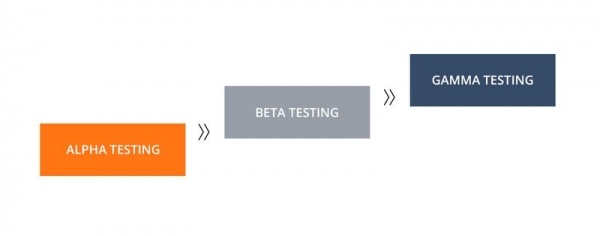Millennials these days can’t survive without apps. They wake up to their phones vibrating and order their breakfast from a food app before rushing to the office after ordering a taxi from some taxi app. This is just a glimpse of what an app dependent millennial’s morning looks like.
Did you ever think that specific mobile app testing frameworks are required to build these apps that make your life easy? From getting up in the morning to entering the office on time, everything takes place over finger taps on breathtaking mobile apps. These are spectacular location-based services apps controlling the app generation of today.
Behind these intriguing apps, there are thousands of mobile app development frameworks trying to provide the most satisfying user experience at your fingertips. The mobile app development market is expanding at a massive rate of CARG 14% and must reach 100 USD Billions by 2022.
Here are some tips on mobile application manual testing in our blog titled Tips for Effective Mobile Application Manual Testing. Check it out.
Let’s get to understand a few of the best mobile app development frameworks that make app development easy:
Swiftic
Swiftic is the best mobile app development framework existing in the iOS platform. It is featured with a simple navigable interface. Using Swiftic is an easy option as you quickly receive a 30-day money-back guarantee for each plan.
Other than that, it consists of a 6 monthly success guarantee. If there is no proper result, you get 6 months of free service.
The primary features of Swiftic are:
- Convenient push notification.
- You can be a consistent shopper with a loyalty card.
- You get to create your mobile store.
- In-app coupons are available.
- Scratch cards are to be used for winning prizes.
- Simple Communication is required.
- A straightforward menu and ordering system.
- Active customer participation.
- Promotion of App
- Social as well as Media Feeds.
- App Publication Support.
- Advanced Analytics.
- 3rd Party Integration.
NativeScript
This is an open-source framework for building native mobile apps empowered with the help of Angular, TypeScript, JavaScript, CSS and Vue.js.
NativeScript is the selected framework for bringing down the code and the time taken by the app to load on the system.
Many of the top app testing companies prefer using Native Scripts for its sturdy web empowerment platform.
A few features of Native Scripts are:
- A Native User Interface with no WebViews.
- Complete access to Android & iOS APIs.
- It’s a cross-platform app.
- Provides significant mission-sensitive business support.
- Strong backend support.
React Native Mobile App Testing Framework
React Native is an excellent JavaScript library used to construct native apps for various devices and platforms. With the help of React Native, you can build the finest apps for iOS and Android.
It will also help create platform-specific versions of different components helping in the simple usage of a single codebase that can be used on different platforms. It’s a community-driven JS library brought to the limelight by Facebook in 2018.
A few of the best features of React Native are:
- Low-Code.
- Easy Third-Party Plugins.
- A proper Declarative API for predictive UI.
- It is great for iOS and Android.
Xamarin
Xamarin is a top-notch mobile app development framework based on .Net. Microsoft introduced the native platform. As it is a cross-platform, open-source app creating a platform, Xamarin provides a development ecosystem with proper backend, API and other essential components.
A .Net developer platform is supported by different tools, libraries, and programming languages. Xamarin developers help you construct native apps with some help from an active community of Android, Windows, macOS, tvOS and iOS.
Some of the best Xamarin features are:
- A community of 60,000 contributors that can’t be broken.
- Smooth backend infrastructure.
- Diagnostic tools.
- Great for application loading.
- Google’s emulator manager.
- Android’s SDK manager.
- Storyboard files
- Facility for hiring the best developers.
Ionic
Ionic usually assists in constructing proper interactive, hybrid, and progressive web apps with cross-platform apps. This open-source framework provides high-class services for building Web, Android and iOS apps. Other than that, during working in Ionic, you can continuously build apps and ship them to proper deployable locations.
App testing companies consider Ionic studio to be the lightning version of Ionic. It is a handy platform. You can also install it locally for having a simple visual development environment.
Ionic’s out of the box features make it the perfect platform for the rest of the mobile app development frameworks.
Ionic’s best features are:
- UI components are run by intuition.
- Quicker development time.
- A stable and robust development platform.
- An evergreen group of around 5 million developers.
- Total control on app building.
Sencha Ext JS
Earlier, this was known as Sencha and was combined with Ext JS. At present, the new face is Sencha Ext JS. You can use the JavaScript framework for constructing data-intensive web and mobile apps. It’s also known as a cross-platform mobile dev framework.
Did you know that ExtJS has way more than 115 integrated and high-performance UI components? A few components are HTML5 calendar, pivot grid, grids, D3 adapter, trees, forms, lists, panels, menus, toolbars, windows etc. Sencha has about 100’s of user extensions.
A few top Sencha Ext JS features are:
- Can handle all the data.
- Strong analytics.
- Flexible system for layout.
- Proper representation of Visual data.
- A package of the State of the art Data-Driven Documents
Onsen UI
Onsen UI is a highly power-packed tool for building complicated mobile apps. It helps create mind-blowing HTML apps with JavaScript, HTML, CSS and supports libraries like Angular JS1, React, Vue and Angular 2+. A positive point about this platform is its competency in the app’s appearance.
Just like, if we feel like having a native appearance for iOS and Android, it will use the automatic style of the UI aspects.
Its attractive UI aspects include tabs, forms, stack navigation, lists etc.
The most important features of this are:
- Negligible set-up time.
- Easy to use and easy to learn.
- Time and cost-saving development.
Conclusion
As we witness a massive growth in smartphone penetration and the hours people spend on mobile devices, ensuring a seamless mobile app experience is critical. To achieve this, teams must adopt the proper mobile app testing framework. Development teams must be aware of the best practices and should actively work with testing teams to ensure they build applications that are easier to test.
Testing must instead be performed on actual devices and not on Emulators and Simulators. This would allow teams to ship apps faster and provide users with a bug-free experience. HikeQA, a top-notch quality assurance software testing organisation, has been doing that for many years now. Feel free to talk to us, and we’ll be ready to help you!

















